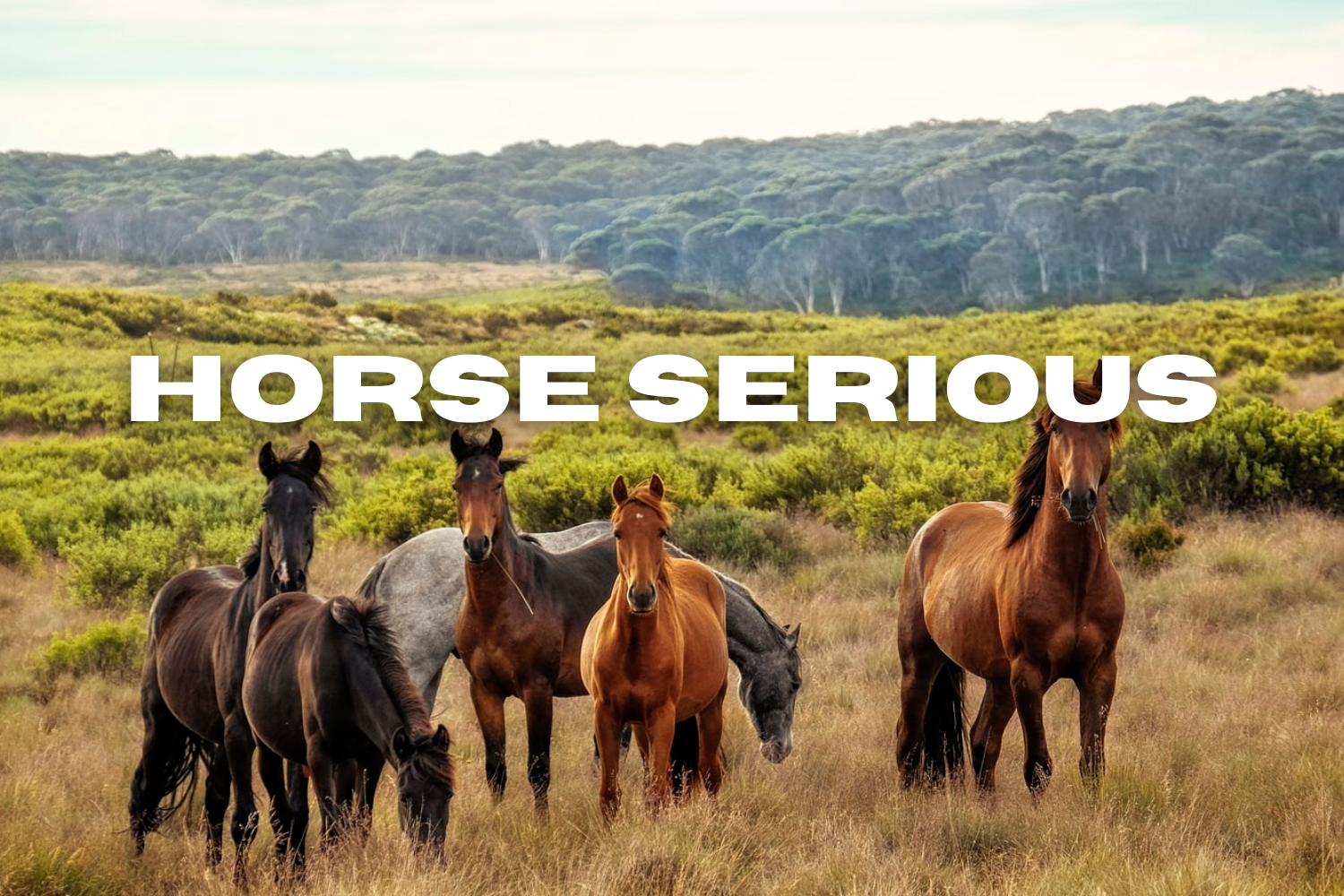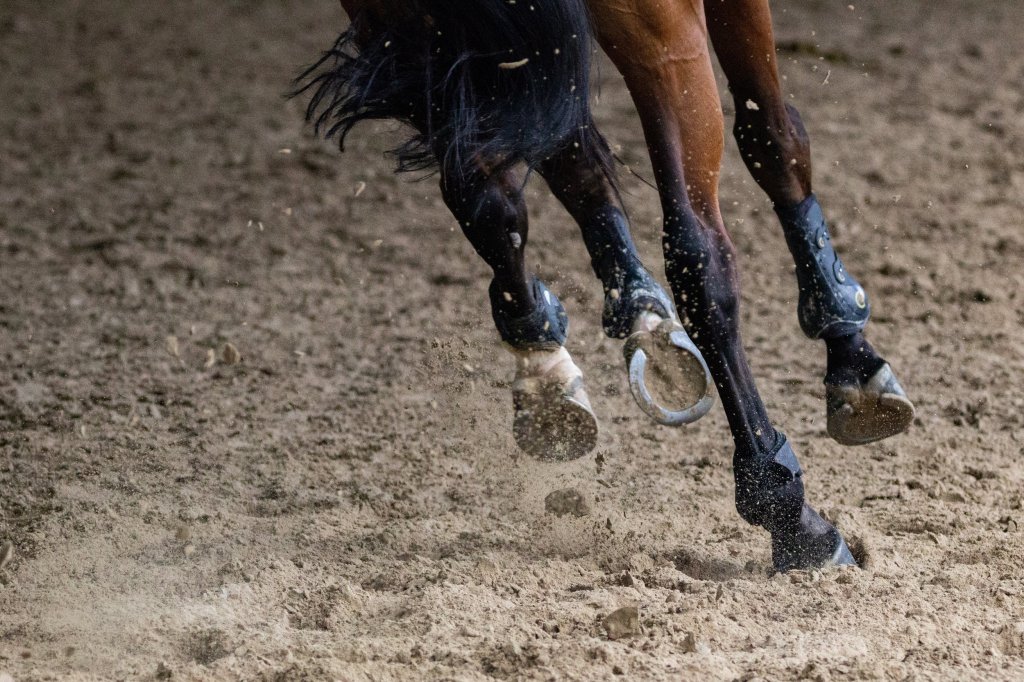Whether or not you’ve been in a saddle, you have undoubtedly heard of a horseshoe. They are a symbol of good luck for those outside the equestrian world, but for us within the community, they are more than a lucky charm.
A horseshoe is a tool that protects and enhances the horse’s feet and hooves. These shoes allow them to do different types of work, like pulling a carriage, going on hacks, and much more.
In this article, we are going to answer horseshoe-related questions, like:
-
Why do horses wear horseshoes?
-
Do all horses wear shoes?
-
What are horseshoes?
-
Are horseshoes cruel?
-
Pros and cons of a horseshoe
-
Pros and cons of not having horseshoes
-
How are horseshoes put on?
-
How often should your horse be re-shod?
What Are Horseshoes?
A horseshoe is a U-shaped plate that is meant to protect the horse’s hooves. Horseshoes have been used for centuries and allow horses to do different types of work. When a horse is wearing shoes, they are called a “shod horse”, a horse without shoes is referred to as “unshod”.
Horseshoes are often made from metals like steel or aluminum but are sometimes made from rubber, plastic, or even copper. Horseshoes are fitted to the bottom side of the hoof (the palmar), most often using nails. A skilled farrier won’t hurt the horse, it is just like trimming your nails with clippers. Sometimes, horseshoes are glued on if temporary protection is needed.
The primary purpose a horse wears shoes is to strengthen and protect its hooves. Just like our fingers and toenails, they will grow if not trimmed. Wild horses wear down their hooves naturally, but domesticated horses often wear down their hooves much more quickly because they are working harder.
In addition to protection and strength, horseshoes also add traction, improve balance, and sometimes are a medical necessity. Some horses suffer from conditions that weaken the hoof, like laminitis, arthritis, or ringbone. Wearing horseshoes can add more support and comfort to the horse.
Do All Horses Need To Wear Horseshoes?
In short, no, not all horses need to wear shoes. Most equestrians and trainers will have their own opinion on whether or not a horse requires shoes. Horseshoes really depend on the circumstances, who you are asking, and what kind of work your horse is doing.
Not all equestrians agree on the use of horseshoes. Some riders and trainers believe that horses need to wear shoes all the time because it provides the best protection and that shod horses generally perform better.
On the other side of the horseshoe debate, we have some equestrians who believe shoeing is not always necessary. For example, recreational and hobby horses should have regular hoof maintenance combined with high-quality nutrition to allow the horse to be healthy, sound, and comfortable. Some anti-shoeing advocates believe horses should be barefoot all the time.
It is a personal choice, and ultimately it depends on your horse’s needs. The most balanced approach to horseshoes requires looking at the type of work the horse does as the primary reason for needing shoes or not. A cross-country horse will need more protection, stability, and traction, so horseshoes are much more necessary. Whereas a hobby horse that roams a pasture all day and gets ridden lightly, probably doesn’t require shoes.
Are Horseshoes Cruel?
Some people do believe that horseshoes are cruel. They are semi-permanent and it can look like a painful process. However, the truth is, horseshoeing, when done by a professional farrier, is not cruel or painful. The shoes are placed on the areas of the hoof that do not have any nerves. If you’ve ever seen a horse get shoes put on, they are most often completely unfazed.
Benefits of Horseshoes:
-
Protection: horseshoes provide protection, durability, and strength to the horse’s feet. They reduce the risk of injury from working on hard ground.
-
Enhanced performance: Some rider’s find that their horses are more sound and balanced when wearing shoes, especially horses that compete in high-impact events like cross-country and show jumping.
-
Can correct problems: horseshoes can help with balance issues and other problems with a horse’s stride. Shoes can also help correct cracks in the hooves.
-
More support for horses with medical conditions: horses with health issues can find support and comfort by wearing horseshoes.
Cons of Horseshoes:
-
Risk of injury: If a horse is shod from an inexperienced farrier, it can damage the horse’s hoof wall.
-
Expensive: Horseshoeing gets expensive. It needs to be done regularly and is more expensive than trimming.
Benefits of Not Wearing Horseshoes:
-
Cost-effective: Going the barefoot route is the cheapest option. Regular trimming is much more cost-effective than getting shoes put on.
-
Can enhance performance: Some riders find a barefoot horse more sound, especially when they are working in an arena.
-
More natural: Wild horses don’t wear shoes, and some equestrians believe that it is important to keep a horse in its natural state.
Cons Of Going Barefoot:
-
Risk of injury: Going without horseshoes can increase the risk of injury. Horses without shoes are more susceptible to bruising and other injuries during work.
-
More maintenance: Trimming and maintenance for a barefoot horse are needed more often with an unshod horse.
-
Protection may be required: Horses that are barefoot may still find that they need extra protection and traction. Temporary shoes or boots come in handy when competing or going on hacks.
How Are Horseshoes Put On?
The horseshoe is fitted to the palmar side, which is the ground side of the hoof, and is secured using nails.
If the horse already has shoes on, the farrier compares that shoe to the hoof and reshapes it accordingly. The shoe is altered by placing it in a forge, which is like an oven used for heating up metal. Once the shoe has been heated by the forge, the farrier can then shape it with a hammer. From here, the farrier will either nail or glue it to the hoof.
How Often Do Horses Need To Be Shod?
Usually, a horse will need to have their shoes replaced by the farrier every 4 to 6 weeks. This can vary depending on the season, your horse, and the type of work you are doing.
When a horse has their shoes on, their hooves don’t naturally expand like they are supposed to. This is why the shoes need to be replaced so frequently. Going too long without getting their feet done can injure the horse and cause them to come up lame.
https://pagead2.googlesyndication.com/pagead/js/adsbygoogle.js?client=ca-pub-3762802995754264
(adsbygoogle = window.adsbygoogle || []).push({});
https://pagead2.googlesyndication.com/pagead/js/adsbygoogle.js?client=ca-pub-3762802995754264
(adsbygoogle = window.adsbygoogle || []).push({});
https://pagead2.googlesyndication.com/pagead/js/adsbygoogle.js?client=ca-pub-3762802995754264
(adsbygoogle = window.adsbygoogle || []).push({});
https://pagead2.googlesyndication.com/pagead/js/adsbygoogle.js?client=ca-pub-3762802995754264
(adsbygoogle = window.adsbygoogle || []).push({});
https://pagead2.googlesyndication.com/pagead/js/adsbygoogle.js?client=ca-pub-3762802995754264
(adsbygoogle = window.adsbygoogle || []).push({});
https://pagead2.googlesyndication.com/pagead/js/adsbygoogle.js?client=ca-pub-3762802995754264
(adsbygoogle = window.adsbygoogle || []).push({});
https://pagead2.googlesyndication.com/pagead/js/adsbygoogle.js?client=ca-pub-3762802995754264
(adsbygoogle = window.adsbygoogle || []).push({});

